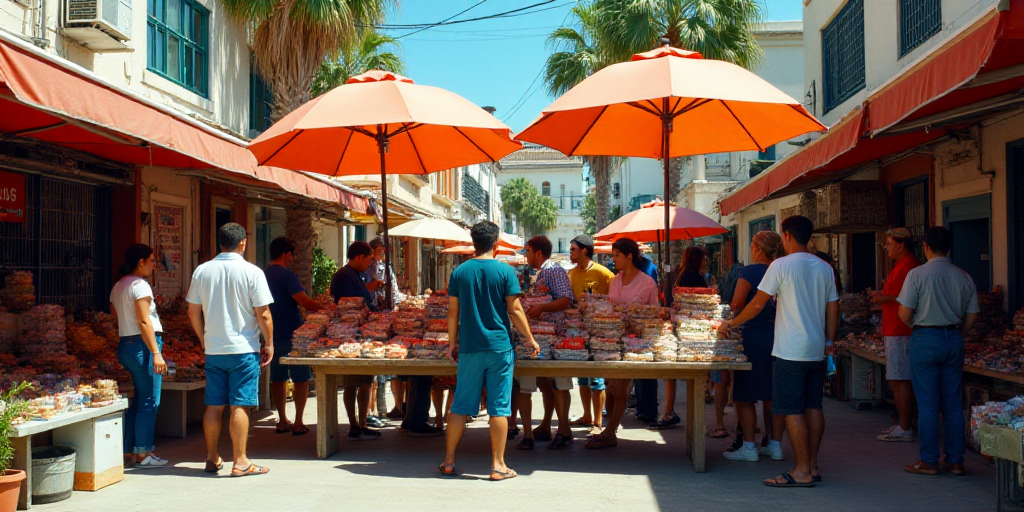Canaco CDMX Warns of Displacement of Traditional Businesses and Risks of Irregular Operations
The commercial dynamics in Mexico City’s Historic Center are changing with the presence of Asian products and merchants, now accounting for 20% of establishments in the area, according to an analysis by the National Chamber of Commerce, Services and Tourism (Canaco CDMX).
Key Findings:
- Asian Establishments: Canaco CDMX identified 3,500 Asian-owned businesses.
- Impact on Local Businesses: The influx of low-quality Asian products has led to a 60% drop in sales for local businesses and displaced traditional establishments like wedding dress shops and furniture stores.
- Irregular Operations: Over 600 commercial spaces and warehouses operated by Asian entrepreneurs have been documented, many of which are irregular and use parking lots and residential apartments as storage.
- Gentrification Concerns: The excessive weight of merchandise in buildings not designed for storage and the occurrence of fires pose latent dangers.
- Nighttime Deliveries: Products are delivered by truck at night, leading to an increase in “diableros” (informal street vendors) in the area.
- Affected Streets: The phenomenon has been observed in streets such as Peña y Peña, Manuel Doblado, Bolivia, and Izazaga.
Canaco CDMX’s Recommendations:
The chamber has urged authorities to:
- Review Land Use and Permits: Examine the land use and permits for properties occupied by Asian businesses.
- Strengthen Customs Fiscalization: Enhance customs oversight to prevent irregular operations.
- Protect Local and Artisanal Commerce: Implement campaigns promoting authenticity to safeguard local and artisanal businesses.
- Establish Commercial Restriction Zones: Designate commercial restriction zones to preserve the historic and cultural character of the Historic Center.
Context and Impact:
The growing presence of Asian merchants in Mexico City’s Historic Center has raised concerns among local business owners and authorities. The Canaco CDMX analysis highlights the significant impact of this trend on traditional businesses and the potential risks associated with irregular operations.
With over 3,500 Asian-owned establishments now accounting for 20% of the commercial activity in the Historic Center, local businesses have experienced a substantial decline in sales. This shift has led to the displacement of long-standing businesses, such as wedding dress shops and furniture stores, which have been forced to close due to the influx of low-quality Asian products.
The situation has also given rise to irregular commercial operations, with many Asian entrepreneurs using parking lots and residential apartments as makeshift warehouses. This has contributed to a phenomenon of commercial gentrification, displacing the local resident population and posing safety risks due to overloaded buildings and fire hazards.
Moreover, the nighttime deliveries of Asian merchandise have resulted in an increase in informal street vendors, further altering the character of the Historic Center. The problem is particularly acute in streets like Peña y Peña, Manuel Doblado, Bolivia, and Izazaga, where the concentration of Asian businesses is most pronounced.
Key Questions and Answers
- What is the main concern raised by Canaco CDMX? The primary concern is the displacement of traditional businesses and the risks associated with irregular operations by Asian merchants in Mexico City’s Historic Center.
- How many Asian-owned establishments are there in the Historic Center? According to Canaco CDMX, there are over 3,500 Asian-owned businesses in the area.
- What percentage of commercial activity do these establishments represent? Asian-owned businesses account for 20% of the commercial activity in Mexico City’s Historic Center.
- What impact has this trend had on local businesses? The influx of low-quality Asian products has led to a 60% drop in sales for local businesses and displaced traditional establishments.
- What are the potential safety risks associated with this trend? The excessive weight of merchandise in buildings not designed for storage and the occurrence of fires pose latent dangers.






